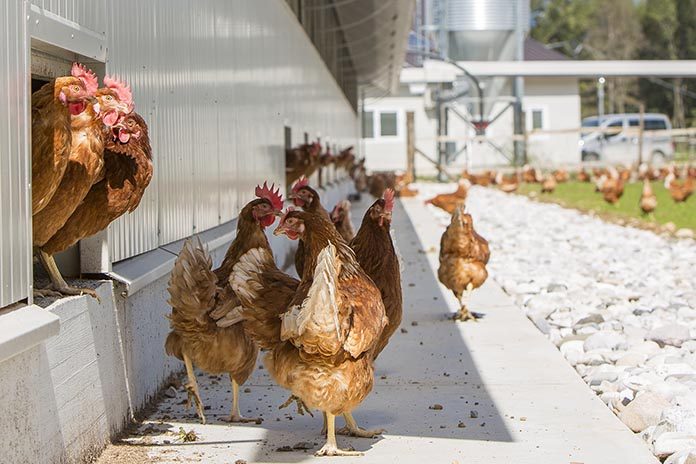
The use of alternative systems in layer farming has increased in the commercial egg industry due to pressure arising from consumers concerns about hen welfare related to intensive production systems. Despite there being a paucity of research concerning how these changes will affect hen welfare, regulations are being established to promote alternative systems.
One concern for egg producers is the extensive time commitment and labor costs required to manage alternative systems. Genetic selection for modern layers has improved hen performance but has been based upon intensive management systems. The objective of this study was to examine the labor-hours needed to manage 3 modern commercial brown egg layer strains in different traditional and alternative systems.
All birds were managed under similar lighting and nutritional programs in either conventional cages (CC), enriched and enrichable colony cages (EC), cage free housing (CF), or free-range environment (R) from 33-81wk. Time data was collected daily using GLP compliant methods as employees completed their duties in each system. Wireless access within the houses ensured data was collected immediately upon completion of tasks using Google Drive. Animal Caretakers rotated between systems biweekly to prevent personnel bias and tasks consisted of routine animal care, egg collection, and collection of production data. Tasks were relatively uniform across all alternative systems, with the exceptions of litter and pasture management required for CF and R, respectively.
Data was transformed to reflect labor-hour per hen housed and hen surviving by strain and system for the production cycle. No significant differences for labor-hours were found between the strains, however highly significant differences were observed between systems. CC and EC required similar time commitments at 0.85 and 0.78h/hen housed respectively while R required significantly more time at 2.23 h/hen housed; CF provided a significant intermediate at 1.35h/ hen housed. Labor-hours for hen surviving were also significant and followed a similar trend.
Although the time required had decreased compared to a previous time study at the same farm, extensive production systems were still observed to be highly labor intensive when compared to traditional housing.
Source: 2019 International Poultry Scientific Forum

















